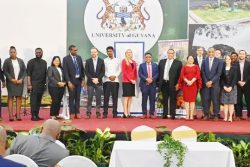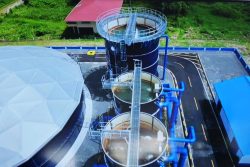As stated in the July 14th editorial of this newspaper, the announcement on July 8th by the government that an agreement had been signed that would see a team of medical specialists from Mount Sinai Health System in New York deployed here for training exercises at the Georgetown Public Hospital (GPH) is welcome news.
The deal also encompasses a wide range of other developments including centres for excellence in oncology and cardiac care. It all sounds very revolutionary and promising for the public health care system which though it has performed yeoman’s service over the years has delivered very unevenly across the country.
What should be of great interest to the public are the financial arrangements pertaining to the project and transparency. This, of course, is the responsibility of the government but in all of the upbeat and optimistic assessments by the varied speakers on July 8th at the launch – including President Ali – there were severe gaps in information which the government must address immediately. Will a comprehensive project document be laid in the National Assembly? The government has to raise its level of engagement with the public and be forthcoming on important details in projects of this type.
In terms of the financials, all that the public knows thus far is that the initiative will be co-financed by the Government of Guyana and Hess Corporation, one of the partners of ExxonMobil in the lucrative offshore oil operations. Hess is apparently putting up US$32m towards this initiative. Hess should be commended for this allocation though cynics will advance that the figure is a demonstration of the absolute giveaway encompassed in the 2016 Production Sharing Agreement which this government continues to unreasonably protect from renegotiation.
What are the conditions attached to this financing from Hess? Does it have a veto over the expenditure? Is the money to be entered into the local financial system and then disbursed to the various providers of service? Or is Hess making direct payments to whosoever it would like to? One hopes that Members of Parliament will seek to have these and other questions answered by the Minister of Health.
How was Mount Sinai contracted and by whom? Mount Sinai comes highly recommended but it is clearly not engaged in charitable service here. Its services will come with hefty fees. As with every other project of this sort, Guyana and its co-financier should be seeking the best provider at the lowest cost possible. How did Mount Sinai enter the picture? Did it advance itself as the best candidate to revolutionise the health care system and the Guyana Government bought into it? Is there any evidence that the government sought competitive bidding for the provision of services for this expensive and elaborate project?
Good to its word, Mount Sinai has already deployed a team here which is currently examining the Georgetown Public Hospital and other facilities. As many as forty high-level professionals are supposed to be here from Mount Sinai in the coming months to assess the health care system and oversee improvements. What is the cost of these interventions now and in the future? Who will judge Mount Sinai’s performance?
Given the heightened sensitivities here about local content, should we just simply be consigning resources available to the local health system to consultants paid at US dollar rates. What about the possible mobilisation of locally available experts or those in the diaspora? Are there centres of excellence in the Caribbean that could have been enlisted at lower rates all the while contributing to the ethos of regional unity?
The public has been told that Guyana is a co-financier and that is all we know. How much is the Government of Guyana putting into this project and over what period? Has there been any discussion of this in Parliament or at the level of the sectoral committee on social services? Who is overseeing the project for the Government of Guyana and making the associated decisions? The Minister of Health? A committee designated by the government from the ranks of its faithful? Hopefully not.
Guyana does have access to large flows of oil revenues and this will be so for the foreseeable future though there are a number of attendant risks. These revenues belong to the people. The government is a mere custodian. It must not operate as if it is the sole arbiter.
It made eminent sense for the people of this country to be made aware of which projects were being financed by oil flows so one could measure carefully the efficacy and wisdom of the use of outlays. Rather foolishly this government is not distinguishing how the oil monies are being spent even if the sums must first be deposited in the Consolidated Fund. It is unacceptable that in all of the laudatory words and encomiums shared on July 8th that the people of this country were denied real information and that a large tranche of the resources have been allocated to finance personnel from Mount Sinai. This project is not off to a good start.








